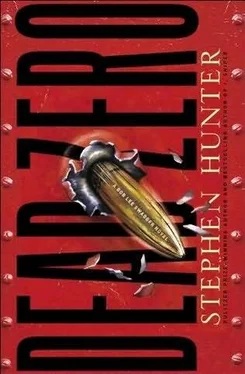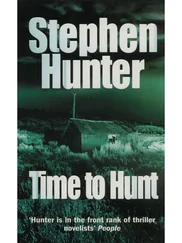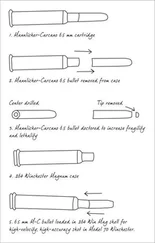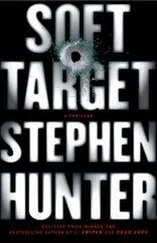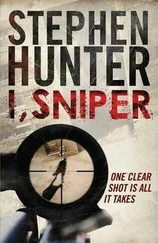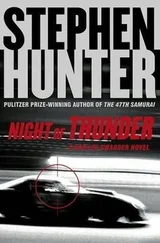“What’re you shooting from it?” asked Swagger.
“Primarily, Hellfire AGM-114. And we are talking some kind of precision. They say ‘Hellfire’ is an acronym for hel -i-copter launched fire -and-forget. Sounds weak to me. I think it’s just some Baptist general’s Old Testament imagination for hellfire and brimstone, raining down on the evil and depraved of Sodom and Gomorrah and Afghanistan. For the record, it’s a laser-guided rocket with a twenty-pound warhead, initially developed to burn red tanks rolling through the Fulda Gap. No tanks here, so we put what we call a blast-and-frag sleeve on that twenty pounds of explosive so that when it goes, it sends out a hundred-thousand-piece spray of supersonic steel. It’s primarily for killing people or blowing up vehicles. It can take out a small building too. For those hard-to-reach spots, we have a little treat called ‘thermobaric,’ which means that in a nanosecond before detonation the explosive atomizes, that is, turns to droplets of mist that fill the air. Then it goes and it really rips a hole in the wall of the universe. We can put it nearly anywhere. Hellfire can fly about three miles, top speed 950 miles per hour, so time in flight is minimal. Originally it was to be TV guided but they couldn’t make it work. They switched guidance systems to what is called soft laser; our operators lock on the target from here and download that info into the guidance system of the weapon itself and then engage, and the bird follows the laser signature down to the end of the ride. It goes hot in a few hundred feet and then it’s very reliable. It’s a nasty bitch; it comes in at a low angle, a little over treetop level, and depending on how accurately it’s been aimed, it can go through a window, pass the Coke machine and the water cooler, stop and use the men’s room, knock on the door, go into the imam’s anteroom, wait until he’s ready, then go in and blow him up.”
Swagger got the joke, if Starling didn’t quite.
“But it’s a tank killer, basically, right?” asked Swagger. “Suppose you’ve got something bigger to whack?”
“That’s our Paveway Two,” Nelson said. “It’s a smart bomb, a TV-guided, five hundred pounder, thermobaric for enhanced destructiveness. The camera’s in the nose, the operator can switch to it and actually ride it down. That’s our crater maker, and each Reaper carries two, in case we need to wipe out a building. It happens. Now how do we decide to use these beautiful little toys? That is the question, isn’t it?” Nelson said.
“That’s why we’re here, sir,” said Starling.
“Fair enough. We have very strict policies on when we can and when we can’t fire. There are three levels of permissibility. The first is called Tango, mil-speak T, for tactical. Normally, all the tac jobs are handled by service aviation. A marine company is pinned down, they call their own command and get a marine Apache and he Hellfires the crap out of whoever’s shooting at the marines. Doesn’t concern us, but sometimes for whatever reasons, the Apaches aren’t able to get there fast enough and we have a drone in the area, our people will take the shot on a Tango license to shoot. They can communicate directly in real time with the grunts. I’m somewhat prejudiced here, but I think the marines would prefer a drone shoot over an Apache or an F-15, because our people are so much better. I mean this is all they do, day after day, and some of them get an almost zen feel for what the aircraft can do and what it can’t, and they can turn on a pin, change angles of attack in a split second, Immelmann turn to the deck, do amazing things with those little aircraft and really put some hurt on the bad guys.”
Swagger watched: in one of many similar cubicles, a young woman in the smart uniform of an Air Force officer, but for her pink flip-flops, sat at a console. She had one hand on a joystick and one hand on a lever to her left. Before her, a black-and-white television screen mounted in a wall of switches and buttons displayed a landform sliding underneath her from ten thousand feet, plus all sorts of technical readouts. Her ears were muffed with earphones, and a prong mike curved around her cheek to her mouth. She was talking, flying, searching, and hoping all at the same time.
“Lieutenant Jameson represents our second level of permissibility. It’s called Oscar, that is O, the O standing for opportunity, as in targets of. Using intel developed by on-the-ground CIA assets, she knows where there is likely Taliban activity. Her battle manager vectors her onto the area, and they’re both looking hard for signs of men with weapons. They may or may not represent any direct threat to coalition troops, but our rules of engagement won’t let us just pop anyone. We have to see a weapon. Sometimes we’ll stay with a truck or an SUV for hours waiting for a glimpse of an AK muzzle. Then we spend ten minutes trying to get permission, first from whoever’s area of responsibility it is, then from the Agency, first on the ground in Afghanistan, then from an agency coordinating committee, then from AF command, and they have a legal officer sitting in on all Oscar operations, and all of them have access to the same battlefield visuals. Then and only then do we shoot. That’s most of our shooting.”
Lieutenant Jameson seemed to have come up with a possible target. Now she was really flying the aircraft ten thousand miles away, and Bob watched as her body language indicated the torque and concentration she was putting in as she delicately played the two controls against each other.
“The stick,” said Colonel Nelson, “is vehicle manipulation, stick and rudder in the old days. Up, down, left, right. The rudder pedals are now part of a computer program, so she’s not pumping away with her feet at the same time. Meanwhile, the lever on the left is throttle, controlling airspeed, engine pitch, that sort of thing. When we’re close to the ground and engaging targets, we’re operating right near the stall zone, so the trick is to find the equipoise between the stall and the maneuver. As I say, these folks develop an amazing touch for it, I mean I’ve seen them do things I couldn’t even dream of in my F-15.”
Jameson was good. Just a few feet from her glowing, lit-by-screen face, in black and white and flickering with the technical monitors that, in a river rush of cascading integers, told her the speed, direction, health, and mood of her unmanned aviation vehicle, the ridges of Afghanistan slid by. After one of them, she banked hard left, tilting her wings to forty-five degrees to match the incline of the slope beneath, then jacked into what felt like a left hand so harsh Swagger could feel the imaginary Gs in his stomach as she skittered over a village, twirled again, until a cruciform was on a single house. She rotated in low orbit, the house staying locked in the cruciform reticle.
“Jameson’s our new ace. They call her New-D, which she doesn’t like, but it’s a tribute to her and to Old-D, Dombrowski, who was the best until she left. Now watch: Jameson could take it out with the snap of a button,” the colonel said, “but not without permission. You can’t hear it, but she’s on the horn this very minute, extremely intense conversations with a variety of sources, not only her battlefield manager”-he pointed to an officer on a platform in the center of the room, bathed in gray light as he was following several dramas of interception at once-“but the other sources I mentioned. She’s even reading the license plates of the vehicles to see if they match any affiliated with the Taliban or Al-Qaeda.”
“And if she gets a signifier, she’ll shoot?” asked Chandler.
“With approval.”
But this wasn’t a good one for Diana the Huntress. That goddess would have to wait for her blood offering from her young acolyte Jameson as her unseen collaborators and supervisor decided against pulling the trigger, and she climbed from the area, locked on a steady course, riding the grid this way before she rode it that way.
Читать дальше
